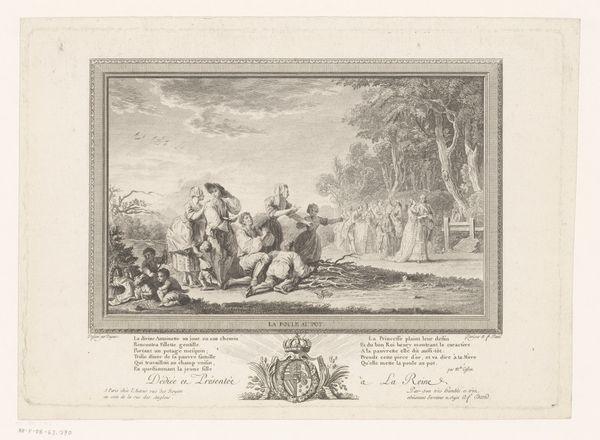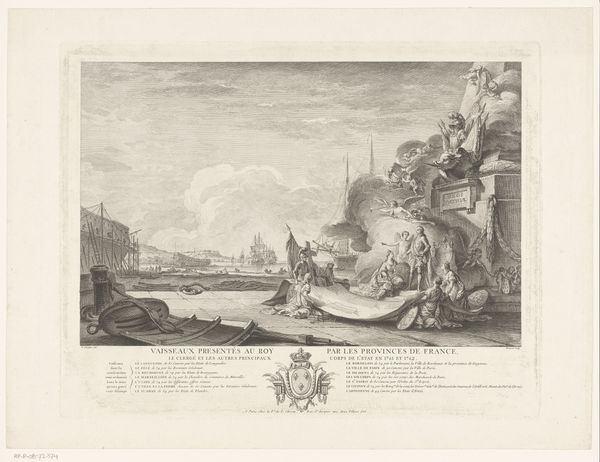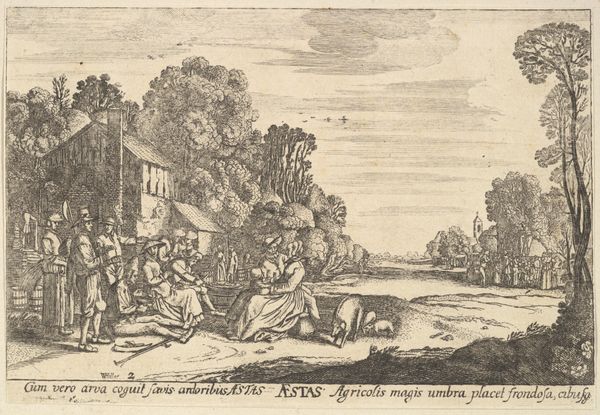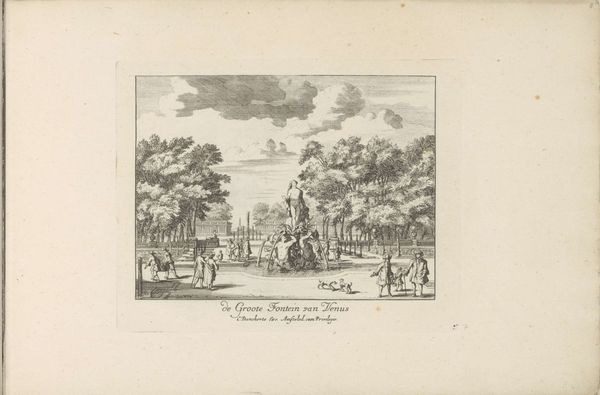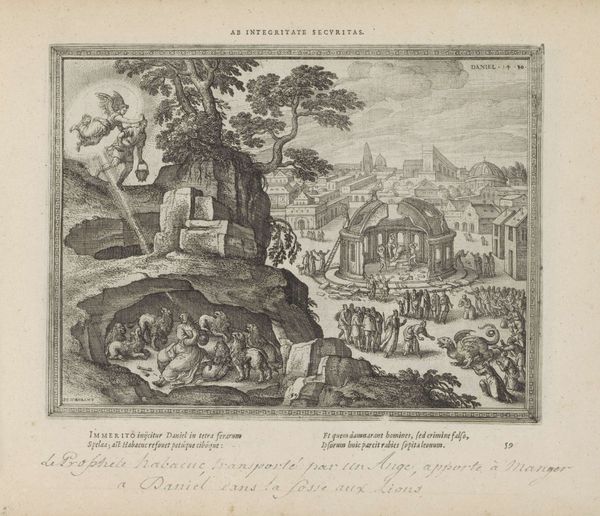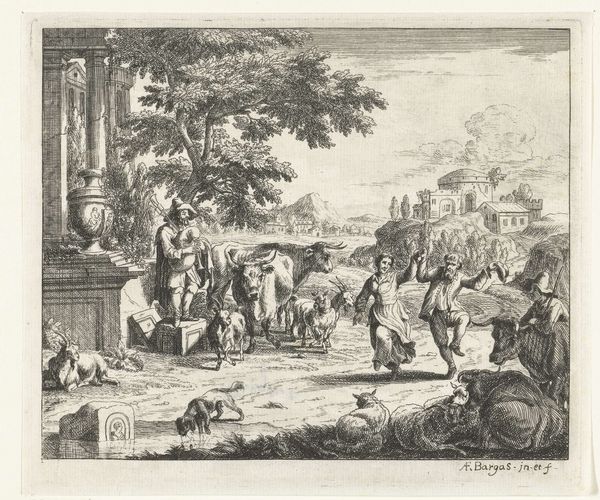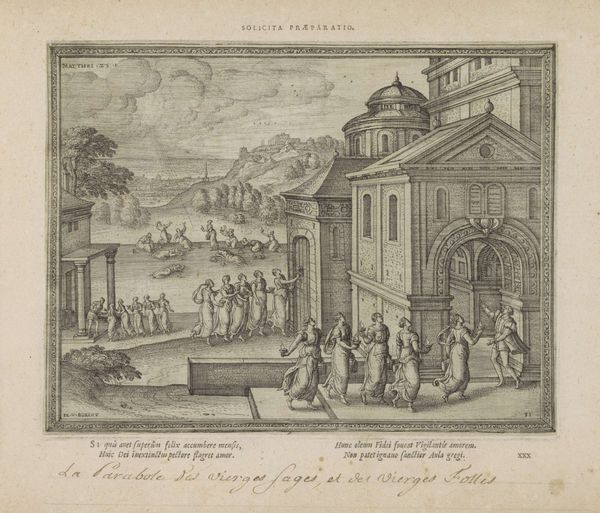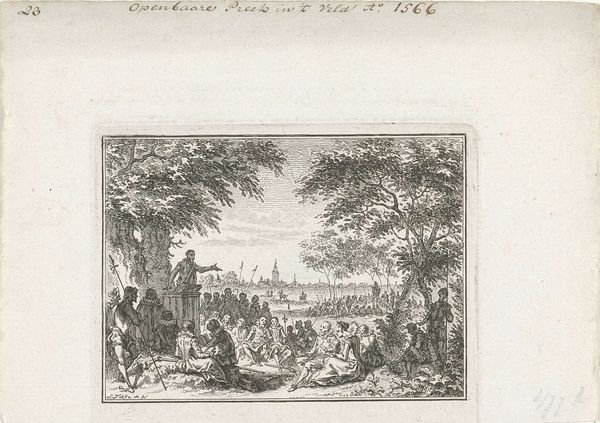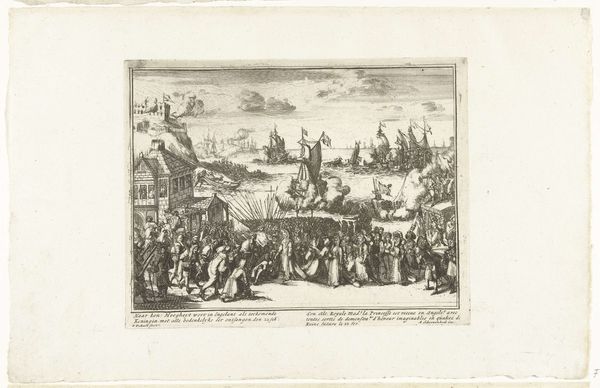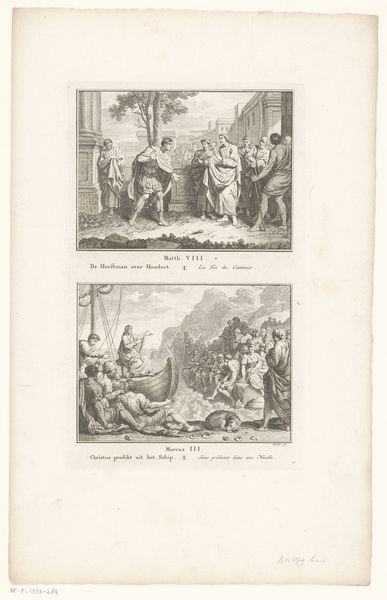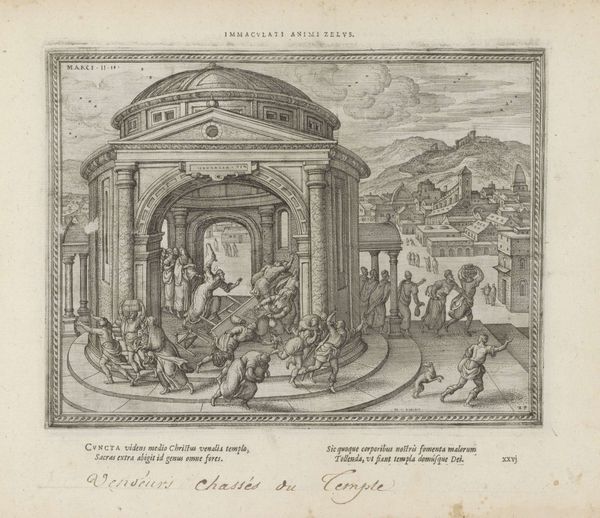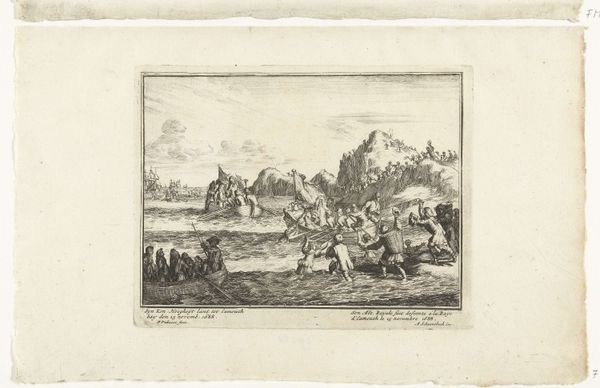
Dimensions: height 203 mm, width 254 mm
Copyright: Rijks Museum: Open Domain
Antonio Gabrieli’s ‘The Fish Seller’, an etching made in the 18th century, shows us a vivid slice of life, rendered through the skilled manipulation of metal and acid. The printmaking process itself is crucial to understanding the image. Gabrieli would have meticulously drawn his composition onto a copper plate coated with wax, then submerged it in acid, which bit into the exposed lines, creating grooves. Ink was then applied to the plate, wiped clean, and the remaining ink in the grooves transferred to paper under immense pressure. Look closely, and you'll see the labor inherent in this marketplace scene. The people clustered around the fishmonger are caught in a moment of economic exchange, while in the background, workers carry the day’s catch. The lines of the etching capture the weight and texture of their labor. It's important to remember that prints like this one played a vital role in disseminating images and ideas in the 1700s, challenging the elitism of painting. So, in appreciating this work, we aren’t just looking at an image, but also considering the social context of its making, and its role in a burgeoning world of mass production.
Comments
No comments
Be the first to comment and join the conversation on the ultimate creative platform.
